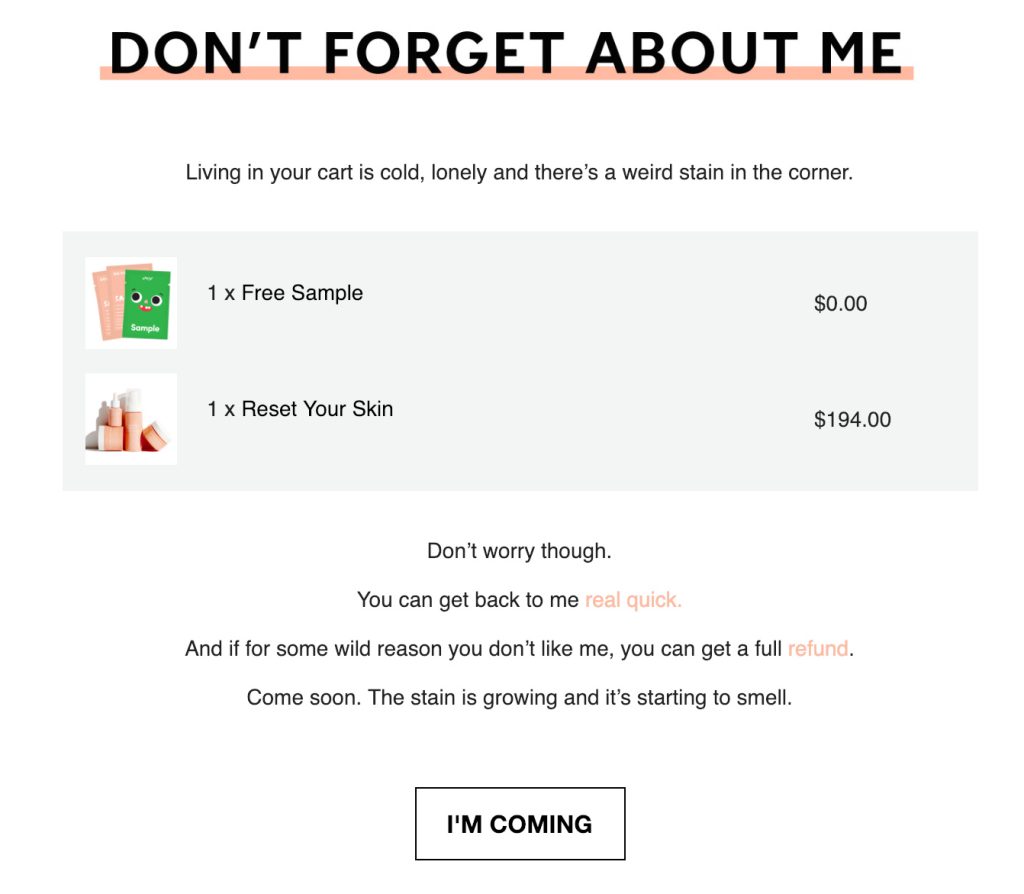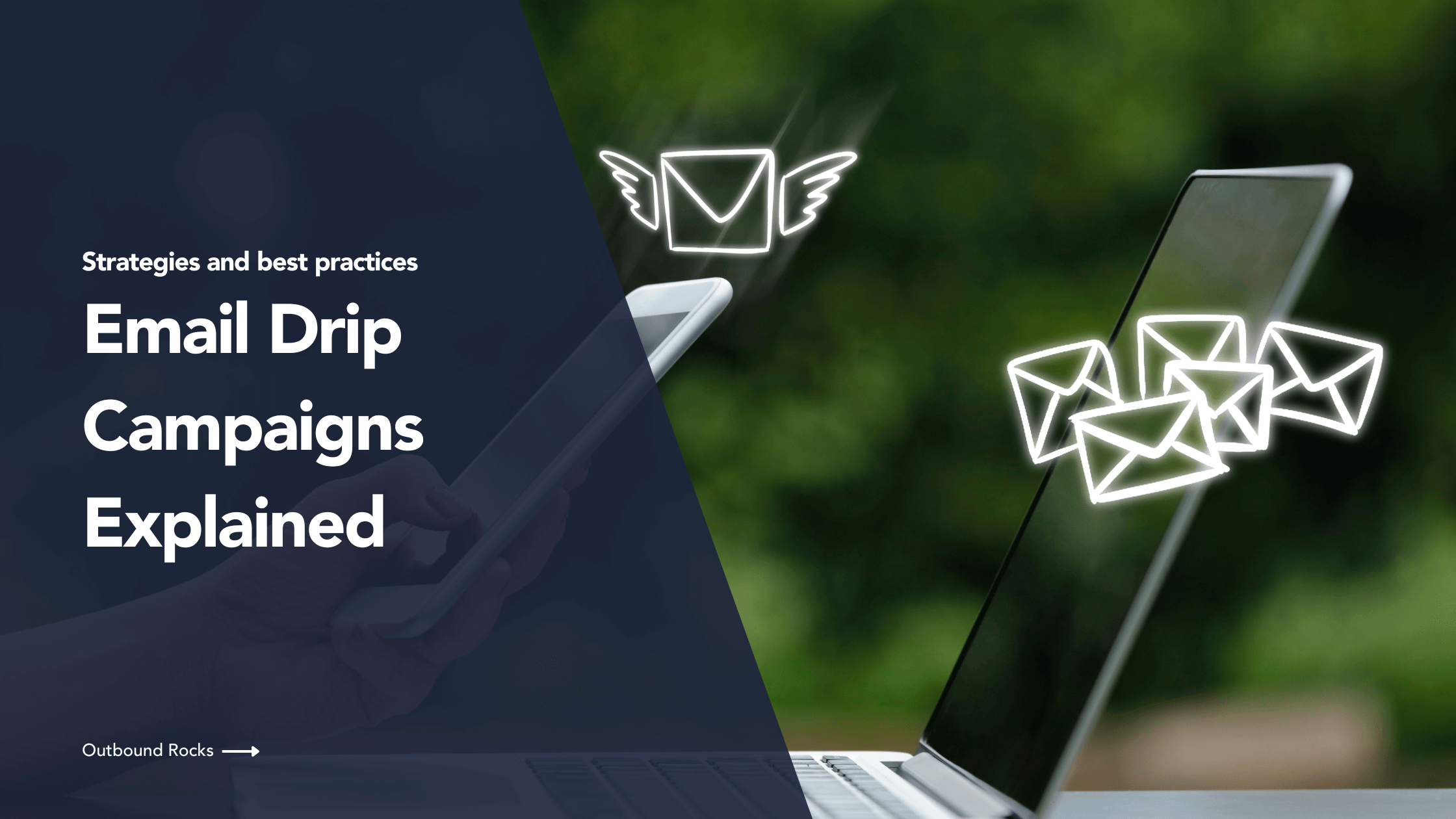Engaging your audience and nurturing leads effectively can be challenging. Many businesses struggle to convert prospects due to inconsistent and untargeted communications.
So how do you overcome this hurdle?
Email drip campaigns offer a powerful solution, providing a structured and automated approach to maintaining ongoing engagement and guiding leads through the email sales funnel.
In this article, we’ll cover the basics of email drip campaigns and explore key strategies and best practices to help you maximize their effectiveness.
Read on to discover how you can master email drip campaigns and up your marketing game.
TABLE OF CONTENTS
– What is a drip email campaign?
– Differences between email drip and email nurture?
– How many emails are in a drip campaign?
– Types of Email Drip Campaigns
– Conclusions
What is a drip email campaign?
A drip email campaign is a series of automated emails sent to subscribers based on specific actions or timelines.
Unlike traditional email blasts, which send a single message to a broad audience, drip campaigns are tailored to guide recipients through a pre-defined journey with targeted content.
Key features of drip email campaigns:
- Drip campaigns are pre-set and automatically triggered based on user behavior, such as signing up for a newsletter, abandoning a cart or reaching a milestone.
- Each email in the series can be personalized with the recipient’s name, behavior-based content and other data points, making the communication more relevant and engaging.
- Emails are sent at optimal times based on the recipient’s actions or predetermined intervals, ensuring the right message reaches them at the right time.
- Drip campaigns are designed with specific goals in mind, such as nurturing leads, onboarding new users or re-engaging inactive subscribers.

What is the difference between email drip and email nurture?
Since they are very similar concepts, you may be asking, what are the differences between email drip campaigns and email nurture campaigns?
While both are automated email marketing strategies, they serve distinct purposes in engaging and converting leads.
Here are the key differences:
- Purpose: Drip campaigns aim for specific actions and conversions, while nurture campaigns focus on building relationships.
- Automation: Drip campaigns are more rigidly automated, based on triggers or schedules, while nurture campaigns are adaptive and often personalised.
- Structure: Drip campaigns follow a linear sequence, whereas nurture campaigns can adapt based on recipient behaviour and interests.
- Goal: Drip campaigns aim for immediate results, while nurture campaigns focus on long-term engagement and building trust.
- Content: Drip campaigns offer standardised content to guide through the steps, while nurture campaigns offer personalised, value-driven content.
How many emails are in a drip campaign?
According to Mailchimp, the optimal number of emails in a drip campaign is generally between 4 and 10. These emails are strategically spaced over a period of 4 days to 2 weeks.
At Outbound Rocks, we use this approach to maintain consistent engagement with recipients without overwhelming them or causing email fatigue.
However, we believe there are several factors to consider when deciding on the exact number of emails to include in your drip campaign:
- Understanding what your audience expects and responds to is crucial. Some subscribers may appreciate more frequent updates, while others may prefer less frequent but more substantive communications.
- Different industries may have different standards for email frequency and content. It’s important to align your strategy with what’s typical and effective in your industry.
- The purpose of your drip campaign – whether it’s to nurture leads, acquire new users or re-engage customers – will influence the number of emails you send and their content.
- A/B testing allows you to experiment with different email frequencies and content variations. This data-driven approach helps you determine which email sequences resonate best with your audience and drive the desired actions.
Ultimately, finding the right balance in the number of emails you send requires continuous testing and refinement.
Types of email drip campaigns
Email marketing drip campaigns offer a versatile toolkit for marketers to engage with their audience at different stages of the customer journey.
Let’s explore five key types of these campaigns and how they can be used strategically to improve customer relationships and increase marketing effectiveness.
Onboarding email drip campaigns
These are essential for welcoming new leads who have just registered on a website or subscribed to a service.
They typically include a welcome message, product/service introduction and exclusive offers to encourage engagement from the outset.
Retargeting email drip campaign
Designed to re-engage leads who initially showed interest but didn’t convert, such as visitors who clicked on ads but didn’t make a purchase.
These campaigns often include nurturing content such as downloadable resources, personalised offers and requests for feedback to understand barriers to conversion.
Post-purchase email drip campaign
Aimed at increasing customer retention and satisfaction by following up after a purchase.
These emails can include surveys to gather feedback, related product recommendations, helpful resources and exclusive offers to encourage repeat purchases and brand loyalty.
Cart abandonment email drip campaign
Targeted at customers who have added items to their cart but have left without completing the purchase.
These campaigns typically include reminders about abandoned items, incentives such as discounts or free shipping, and reasons to complete the purchase to increase the likelihood of conversion.

Promotional email drip campaign
Used to announce new products, sales or brand updates.
These campaigns build excitement through a series of emails that may include sneak peeks, interactive elements such as contests or quizzes, and compelling calls-to-action to drive immediate purchases or engagement.
Conclusions
In conclusion, mastering email drip campaigns is critical for modern marketers looking to maintain meaningful customer engagement and drive conversions.
By leveraging these automated sequences, businesses can overcome the challenges of inconsistent communication and capitalize on tailored content to effectively move leads through the sales funnel.
Want a tool that does all this for you? Visit outboundrocks.com, fill out the form and try our demo for free.
